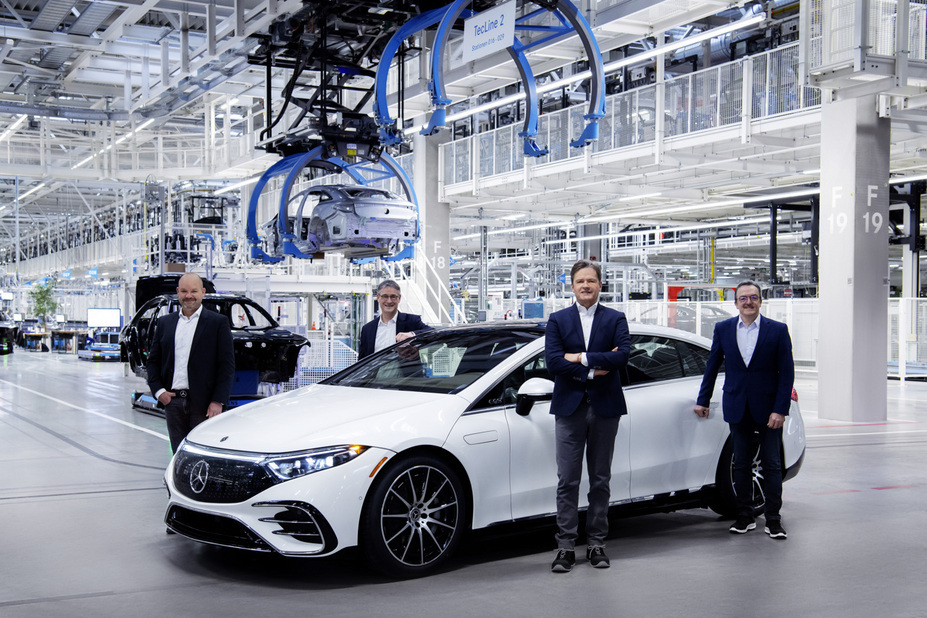Mercedes-Benz held an electric vehicle strategic update ceremony on July 23, announcing that it will achieve comprehensive electrification by 2030 if conditions permit.
_20210725182053.jpg)
We have sorted out some key points of Mercedes-Benz’s strategic plan as follows.
About platforms:
-
Starting in 2025, all new architectures will use only electric architecture.
-
By 2025, Mercedes-Benz will launch three pure electric architectures (MB.EA is a scalable modular platform covering mid-to-large-size passenger vehicles, which will be the future pillar of Mercedes-Benz’s electrification; AMG.EA is a dedicated high-performance electric platform for AMG users; VAN.EA is the platform for electric box-type vehicles and light commercial vehicles).
About batteries:
-
Mercedes-Benz’s demand for batteries will exceed 200 GWh in the future. In addition to the nine battery factories currently under planning or production, it plans to cooperate with European battery manufacturers to build eight new battery factories.
-
The next-generation standardized battery will be used in over 90% of Mercedes-Benz models.
-
In order to increase battery density, Mercedes-Benz choose to cooperate with start-up battery material companies such as SilaNano. In the next-generation battery, energy density can be increased to 900 Wh/L by using silicon-carbon composite material in the positive electrode.
About motors:
- By acquiring high-performance motor company YASA, Mercedes-Benz obtained YASA’s proprietary axial-flux motor technology (the motor provides higher efficiency and the highest power density in a smaller size and lighter weight), which provides a motor for AMG.EA.
About charging:
-
Mercedes-Benz will create a “plug-and-charge” charging experience, which will be launched to the market together with the EQS.
-
Mercedes me Charge is already one of the largest charging networks in the world, with more than 530,000 charging piles worldwide.
-
Mercedes-Benz will also cooperate with Shell to expand the charging network. More than 30,000 charging piles will be built in Europe, China, and North America by 2025, including more than 10,000 high-power charging piles.
About employees:
-
Mercedes-Benz will cooperate with employee representatives to continue the transformation of the workforce through extensive skill retraining programs, early retirement, and buyouts.
-
TechAcademies will provide employees with future-oriented qualification training.
-
In 2020 alone, approximately 20,000 German employees received training in electric vehicles.- To meet the development needs of the MB.OS operating system, 3,000 new IT positions will be added.
_20210725182005.jpg)
Finally, Mercedes-Benz plans to invest more than 40 billion euros (about US$47 billion) from 2022 to 2030 to promote electrification. At the same time, Mercedes-Benz will further reduce its investment in gasoline vehicles. By 2026, investment in internal combustion engine models and plug-in hybrid products will be reduced by 80% compared with 2019.
Previously, European old-school fuel car manufacturers such as Volvo and Volkswagen have successively announced their development plans for the next 10 years, and the frameworks are roughly similar.
However, the biggest problem faced by traditional car manufacturers is still personnel. On the one hand, the bloated organizational structure needs reform, and on the other hand, talent in software, electrification, and other aspects needs to be introduced in large quantities.
🔗Source: Mercedes-Benz official newsroom
This article is a translation by ChatGPT of a Chinese report from 42HOW. If you have any questions about it, please email bd@42how.com.
